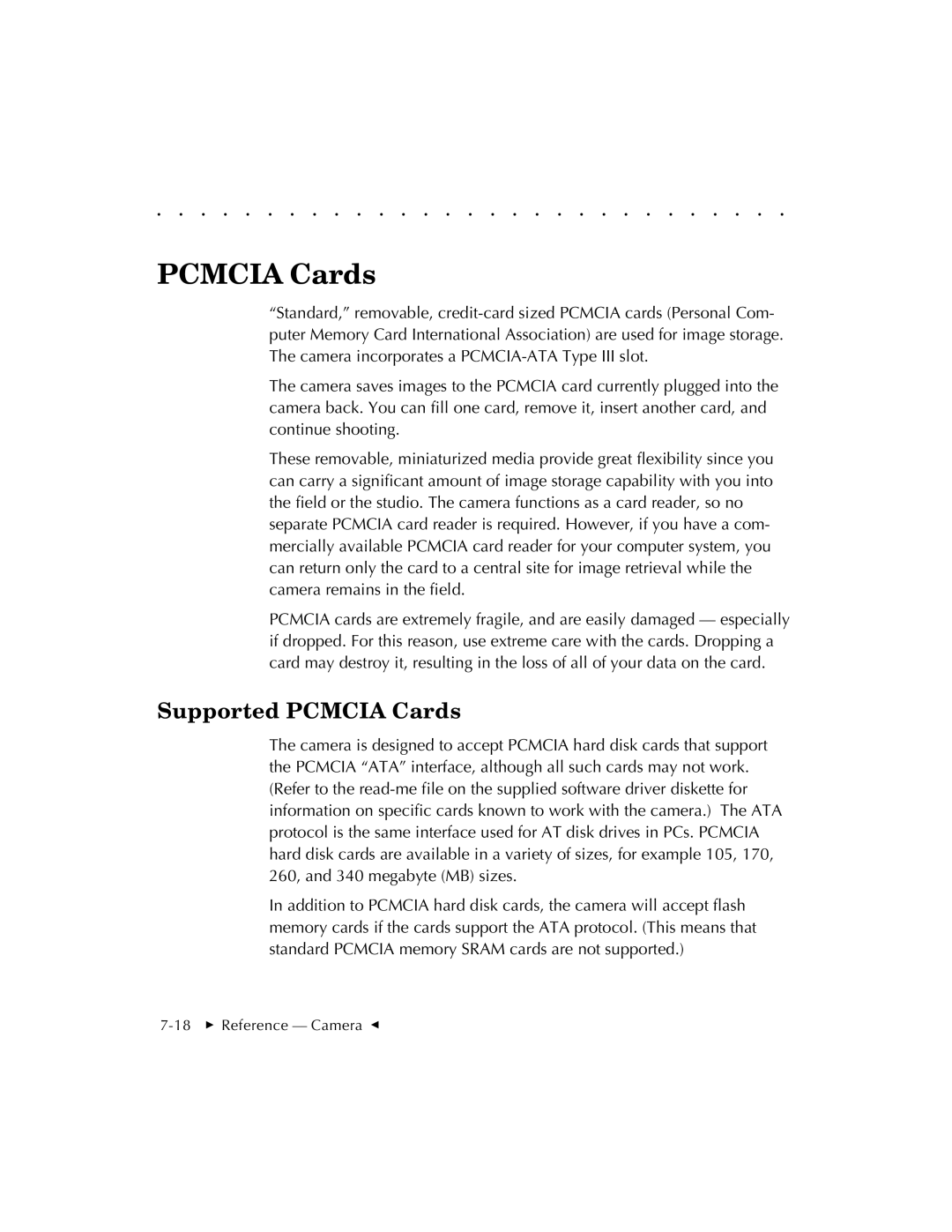. . . . . . . . . . . . . . . . . . . . . . . . . . . . .
PCMCIA Cards
“Standard,” removable,
The camera saves images to the PCMCIA card currently plugged into the camera back. You can fill one card, remove it, insert another card, and continue shooting.
These removable, miniaturized media provide great flexibility since you can carry a significant amount of image storage capability with you into the field or the studio. The camera functions as a card reader, so no separate PCMCIA card reader is required. However, if you have a com- mercially available PCMCIA card reader for your computer system, you can return only the card to a central site for image retrieval while the camera remains in the field.
PCMCIA cards are extremely fragile, and are easily damaged — especially if dropped. For this reason, use extreme care with the cards. Dropping a card may destroy it, resulting in the loss of all of your data on the card.
Supported PCMCIA Cards
The camera is designed to accept PCMCIA hard disk cards that support the PCMCIA “ATA” interface, although all such cards may not work. (Refer to the
In addition to PCMCIA hard disk cards, the camera will accept flash memory cards if the cards support the ATA protocol. (This means that standard PCMCIA memory SRAM cards are not supported.)
